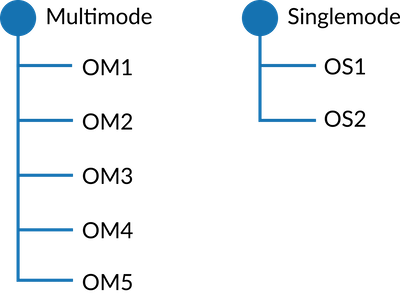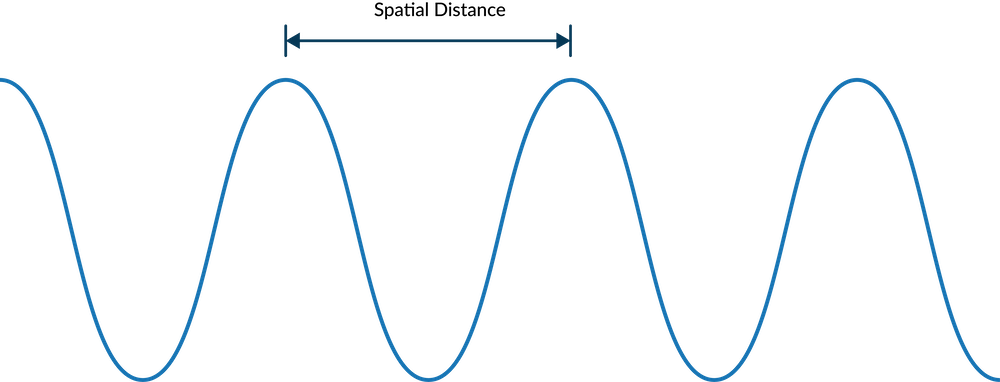SFP Selection Simplified: What You Need to Know
The Small Form-Factor Pluggable (SFP) is a crucial component in any fibre optic communication system. One of the major challenges when dealing with SFPs is determining which type to use, especially given the wide variety available on the market.

When selecting an SFP for your system, there are a few essential considerations. First, an SFP is required at both ends of the connection. For instance, if you are connecting two switches, you will need two corresponding SFPs.
The next crucial question is: which SFP should you choose? A general rule of thumb is that everything must be compatible across your system. Four critical factors need to align: Mode & Diameter, Distance & Power Budget, Wavelength, and Bandwidth. Failure to match any one of these can result in system malfunction, wasting time and disrupting network operations.
Factor 1: Mode & Diameter
Fibre optics come in two modes: Singlemode and Multimode. An SFP can support either one but never both. The mode is typically indicated on the SFP and may be reflected in the part number. For example, "MLC2" indicates Multimode (M). Compatibility issues often arise because people overlook mode matching, leading to underperformance or system failure.

Fibre optic is the medium that transfers the 1s and 0s over Light or Light Emitting Diodes (LEDs). A fibre optic cable consists of multiple optical cores, each as thin as a human hair. Since these cores are extremely fragile, they are bundled together to form a single fibre optic cable, ensuring both protection and efficient data transmission.
The mode dictates how data is transferred down the fibre. For Multimode the SFP will transmit multiple light sources, where with Singlemode will transmit one. Therefore, the SFPs need to match at both ends, and also match the installed cable.
The cores of fibre optic cables are very small, making their diameter crucial. Fibre optic cores are measured in micrometres (µm) with sizes ranging 9µm to 62.5µm. Multimode has a diameter between 50µm to 62.5µm, and Singlemode has one of 9µm. The core is usually surrounded by a 125µm cladding for protection, and the entire fibre is wrapped to prevent damage and block interference from external elements like dust.
When selecting between Singlemode and Multimode fibre, there is no clear preference. Although Singlemode was once much more expensive, advances in technology have made both options similarly priced. The choice typically depends on factors like availability, installation conditions, or required distance. Consulting a system integrator or fibre installation expert is recommended if you're uncertain about the right SFP or fibre type for your needs.
Other terminologies associated with the fibre mode are OM/OS. O is for optical, M for Multimode and S for Singlemode. These are standards to ensure that fibre meets predetermined specifications and enables multivendor communication.

Factor 2: Distance & Power Budget
Distance, or in other terms power budget, refers to how far the fibre optic signal can travel. Having an SFP that is not powerful enough may lead to lack of communication, or no communication at all. Alternatively, a power budget that is too powerful can lead to damage SFPs.
SFPs have a maximum distance and power budget. The power budget will enable the signal to reach the designed distance, so it is important to select the correct SFP for the correct distance. Note that the distance is measured between two SFPs and not the total distance. See the example.

Multimode is generally limited to up to 2km and Singlemode up to 120km. There are SFPs on the market that exceed these distances, but Westermo currently supply up to 120km.
When selecting an SFP, it's best to choose one with a power budget slightly higher than the required distance, but not excessively so. For instance, using an SFP rated for 120 km to bridge a 100-meter gap can damage the receiver. In this case, an SFP rated for up to 2 km for Multimode, or 20 km for Singlemode, would be more appropriate.
Exceeding the power budget can overdrive the receiver, potentially burning it out, while using an underpowered SFP will result in failed communication. For example, trying to span 50 km with an SFP rated for 20 km would likely result in no communication.
Factor 3: Wavelength
When transmitting and receiving data, both the distance and the mode is required to match at both ends. The wavelength is further factor to consider.
Wavelength refers to the spatial distance between successive peaks of a periodic wave. Broadly speaking the wavelength can either be very small or very large (and everything in between). The smaller the wavelength, the higher the frequency. The larger the wavelength, lower the frequency. Fibre optic transmission is at higher frequency, therefore uses as a much smaller wavelength.

Wavelengths are measured in nanometres (nm). Multimode has a wavelength of 850 nm or 1300 nm. Singlemode has a wavelength of 1310 nm or 1550 nm. To put this in context, 1 meter is 1 billion nanometres.
Some SFPs have different wavelengths, and it is important to ensure that the correct one is selected.
Factor 4: Bandwidth
With a copper ethernet connection, the port will auto negotiate from either 10Mb to 1000Mb, or more. This makes copper ethernet a fantastic medium for many applications, but it is limited. Copper Ethernet has a maximum distance up to 100m as well as being subject to electrical noise when not shielded appropriately. Fibre optic exceeds distances well over 100 km and is naturally immune to electrical noise.
For example, imagine two switches that are less than 100m apart and connected via copper ethernet. If a port on one switch is 100Mb and the port on the other switch is 1000Mb, the switch with the 1000Mb will auto negotiate to 100Mb. A network operates only as fast as its slowest connection. A switch will never increase its speed beyond the slower device; instead, it will automatically lower its speed to match. With fibre it is slightly different.
There must be a match between the speed of the fibre port at both ends. If the two switches in the previous example are using fibre instead of copper, then this connection will not work. This is a very common mistake made since auto negotiation is not possible. So either SFPs must be selected at both 1000Mb (1Gb) or 100Mb, depending on your requirement.
Usually, the SFP has information displayed on either the product itself or included within the part number. Along with the other three factors, the SFP bandwidth is required to match on both sides.
Factor 5: Single or Multiple Cores
When it comes to fibre optic, most cables use two cores. One of those cores is used transmit (TX) and receive (RX), in one direction, and the other with TX and RX in the other direction. A TX must connect to a RX. If a TX connects to a TX, and RX to RX, data communication is not possible. Since a two-core cable is just two single cores connected together, one can simple physically swap the cores around to establish communication.

In some cases, there two cores are not available, though communication is possible using only one core. This SFP known as Bi-Di, where TX and RX use different frequencies and the SFP will filter traffic.

Westermo offer both one and two core SFPs. For a two-core connection, the same SFP must be purchased for both end devices. For example, two MLC2’s. However, for a single-core connection a SFP must be purchased that is compatible. For Bi-Di SFPs they are uniquely identified as A and B. For example, MLC2-BiDi-A and MLC2-BiDi-B. An A connection must always connect to a B. Two A’s or two B’s will not communicate with each other.
Conclusion
In conclusion, it is crucial that the SFPs match. They also need to match what fibre is installed, meaning that a Singlemode SFP must communicate over a Singlemode fibre cable. Mixing and matching components is strongly discouraged, as it will likely cause communication disruptions and may even damage the SFPs. Using mismatched or incorrect SFPs can lead to significant communication failures, downtime, or costly troubleshooting.
Considering fibre is commonly used for backbone infrastructure that provides critical communications to OT networks, it is important to spend time ensuring the installation is correct and the appropriate SFPs are purchased.
Westermo supply a variety of SFPs that are either Multimode or Singlemode. They also have a variety of distances from 550m to 120km, along with different bandwidths and frequencies.
Should you have any questions regarding this matter, please reach out to the Product Manager Rasmus Sjöström - rasmus.sjostrom@westermo.com
See also

Six easy steps to secure your networking device
To reduce the risk of cyber attacks and increase network security, we have developed six simple steps that you can follow.

What is PoE?
Wondering what benefits PoE switches offer in an industrial network? How smart is PoE, and what is the difference between PoE and PoE+? Find out in this blog post.
Nuri Shakeer
International sales

Jos tarvitset asiakastukea, ole hyvä ja käytä tukilomaketta
